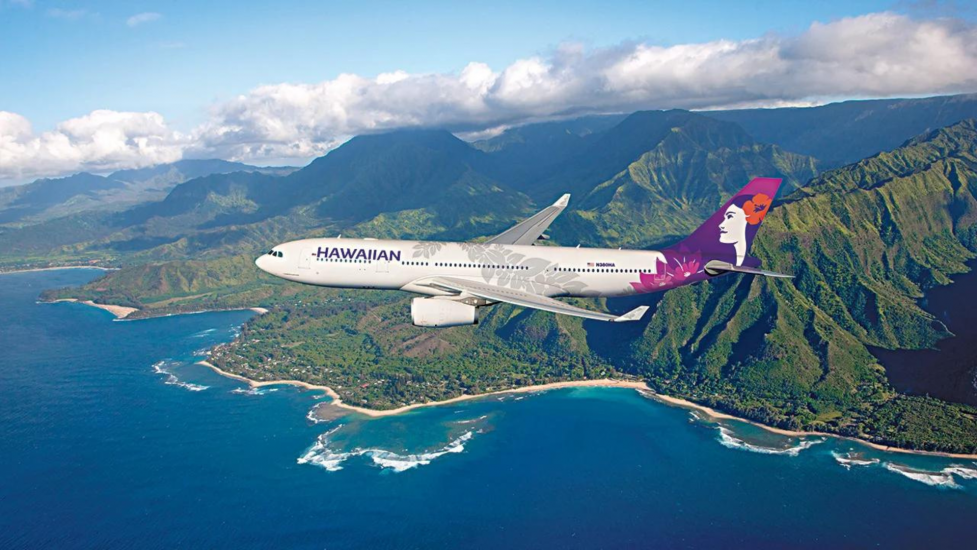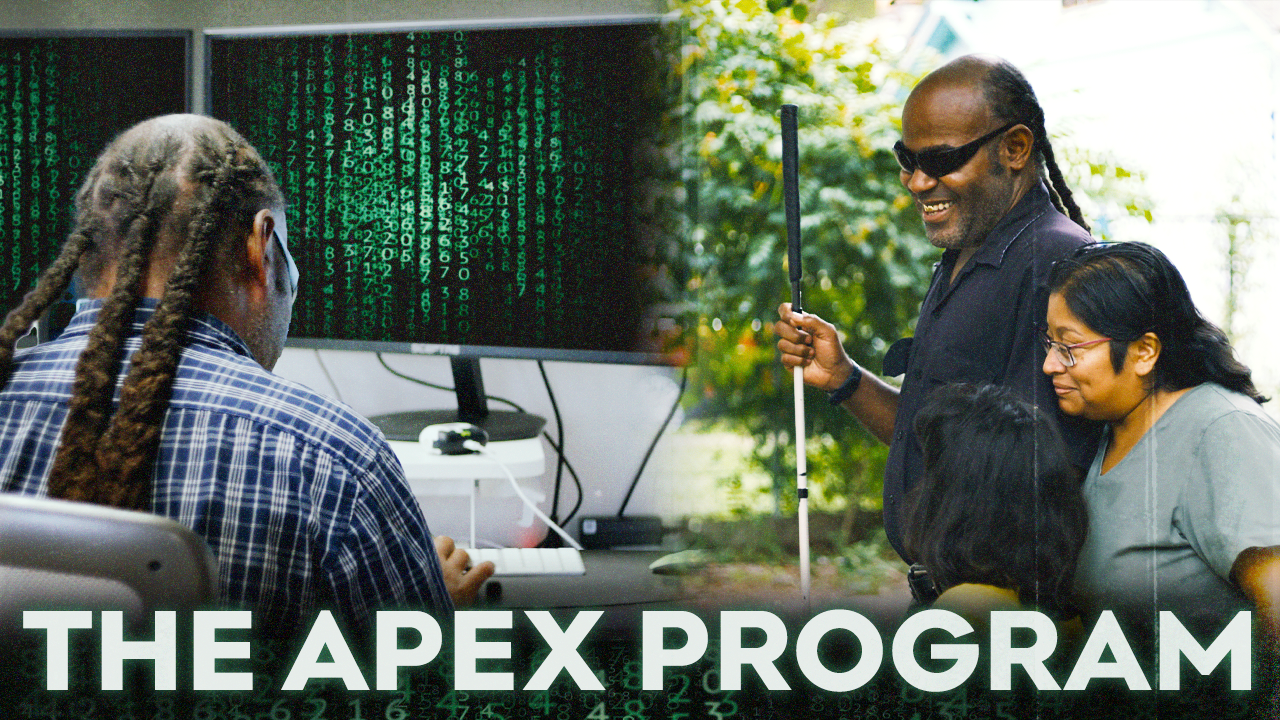
As Hawaii’s largest and longest-serving airline, Hawaiian Airlines describes its purpose as connecting millions of people from around the world with the warm culture of aloha.
It’s also working to connect kama’aina – the residents of Hawaii – with the training and opportunities they need to fill open jobs at the airline. It does that through a combination of apprenticeships, internships, and partnerships.
Hawaiian Airlines’ Heather Ryland, senior director of talent acquisition, says the company is looking for employees with and without degrees, depending on the role. It is also helping people without certifications or training get the training they need.
“We hire those that have a degree or a work equivalent,” explains Ryland. “Our outlook, right now, is to really make sure that we’re very inclusive and understand that people bring their experience and their talents in a lot of different ways and different paths.”
Filling the Need for Aviation Maintenance Technicians
One example of a pathway the airline is building is its recently-established partnership with Honolulu Community College (HonCC) to train greater numbers of aviation maintenance technicians (AMT) in its two-year program.
“The Honolulu Community College AERO (aeronautics maintenance technology) program has a dedicated campus adjacent to the airport. They have the building. They have the hangar to do practical training. But they were short on instructors,” explains Steve Platt, director of technical operations training, Hawaiian Airlines.
Employees of Hawaiian Airlines are stepping up to fill the instructor gap. “One of the initiatives was to augment the instructors to alleviate a two-year waiting list. Whittling down that waitlist – 25 at a time [per semester] – ideally, that waitlist should be zero in a year,” says Platt.
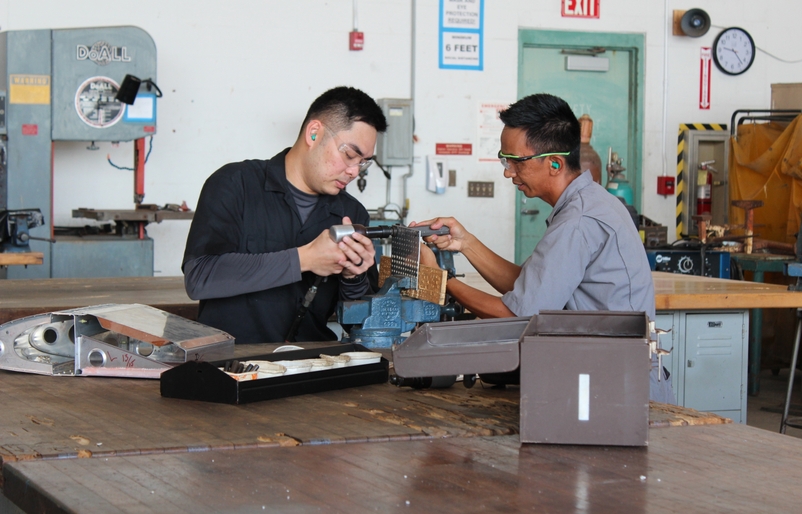
Upon completion of the two-year HonCC associate program, Platt says, “Graduates will be prepared with the knowledge and practical skills necessary to [take the exam and] obtain the FAA airframe and powerplant maintenance certification.”
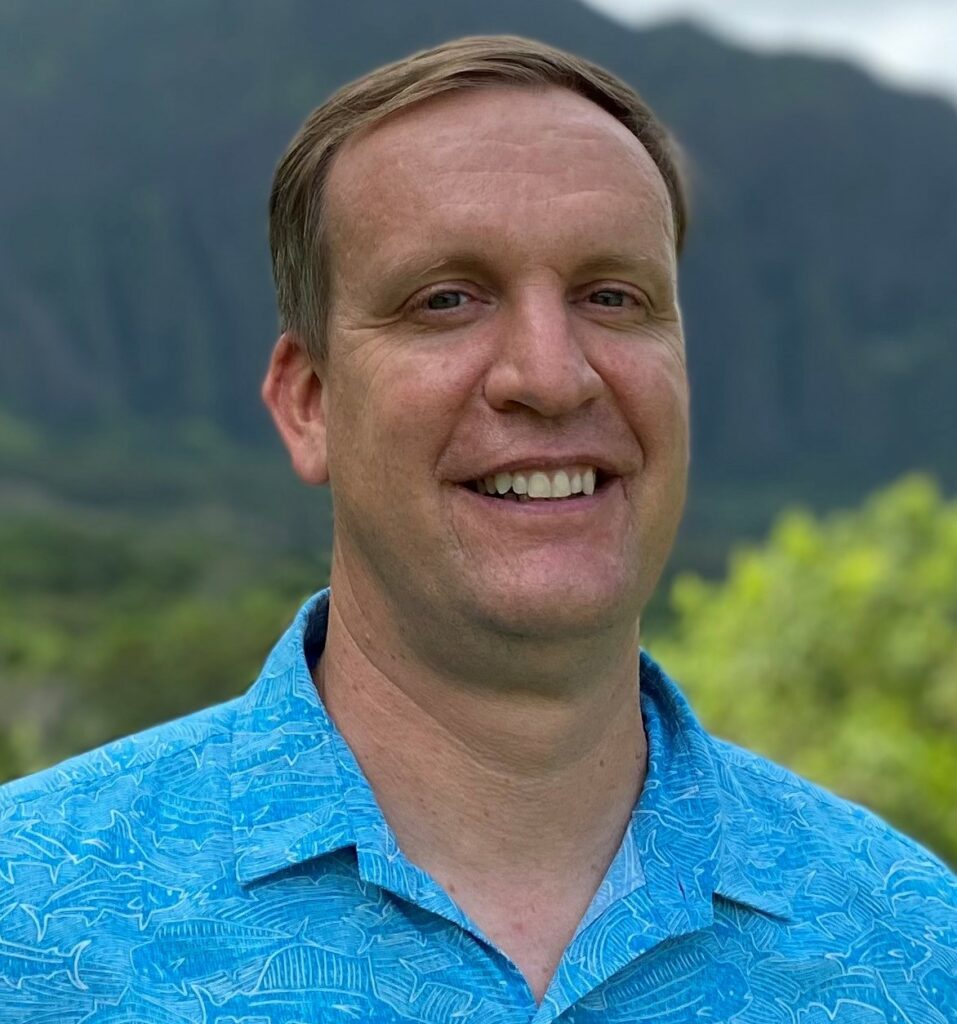
Platt expects with the increased instruction capability, the program will produce 100 graduates in the next two years. “[If you] want to stay in Hawaii, want to go to your local school to stay in Hawaii to work – it’s really our goal.”
He explains most who become mechanics will stay in Honolulu but can bid to work on other islands in the state or any other cities where Hawaiian Airlines operates.
“It truly is beyond hiring mechanics which are hard to recruit and hire. It’s keeping our talent on the island – creating trained, highly skilled, and high-paying positions on the island. By partnering with the school, we start that mentorship early,” adds Platt.
“There is no commitment that any of these mechanics will commit or accept an offer to work with us. But we know by having my instructor there wearing a Hawaiian Airlines polo shirt, they’re seeing it every day. We hope that all graduates would come [to work with us], but if they go into aviation, we’ve done our job as well.”
Opportunity Via Apprenticeship
While the AMT training capability has recently increased at HonCC, there has already been an apprenticeship opportunity in place for five years.
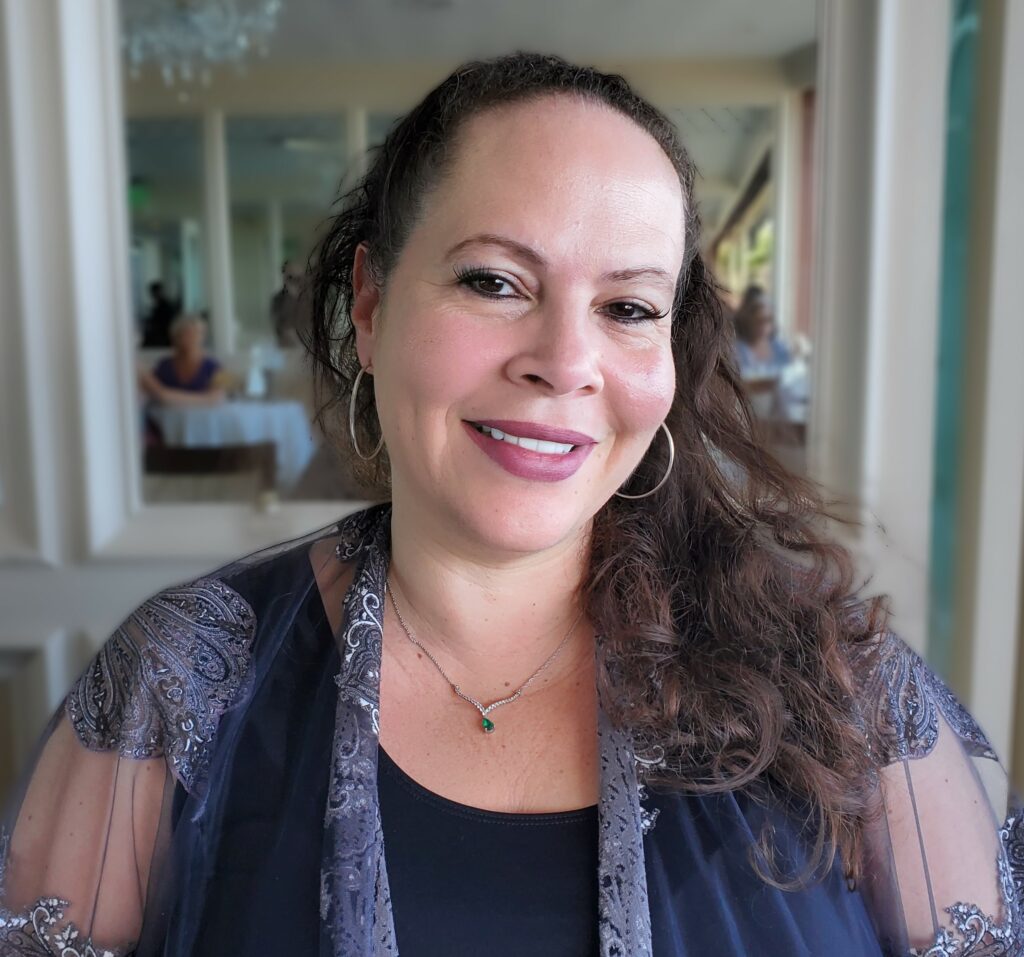
There are 12 rolling mechanic apprenticeships available with the airline. If one of the slots is open, students in HonCC’s AERO program are eligible for consideration after being in school for six months.
Ryland explains, “[The students] apply to Hawaiian Airlines. But we make it open and public. There is one other way in which you could become an apprentice, and that’s if you have military experience and you’re still looking to gain your certification.”
The apprentices out of HonCC work four-hour paid shifts, five days a week – while attending school, explains Platt. “What we offer currently is a union position. Every one of those apprentices is offered a full-time mechanic job once they gain their certification.”
Enrollment in the HonCC program is about $2,500 per semester, according to Ryland. “A lot of federal grants and other scholarship programs are available,” she adds. “Through the talent acquisitions at Hawaiian Airlines, we are looking to support scholarships ourselves.”
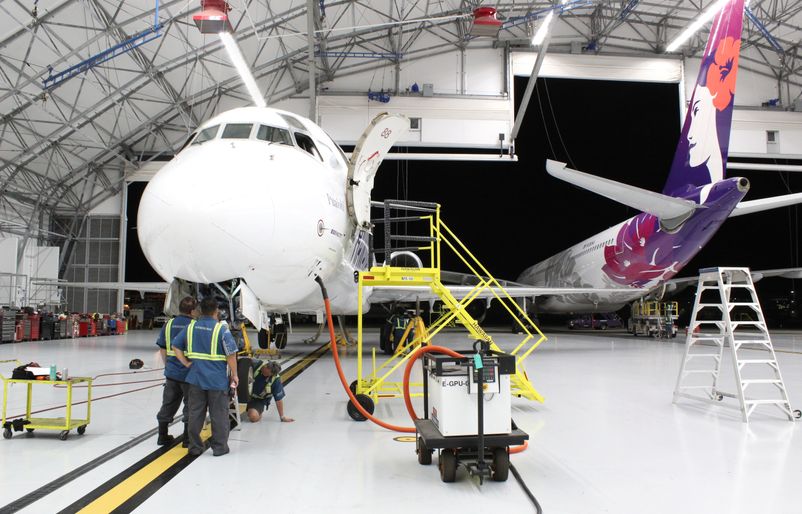
The starting hourly rate is just under $35 an hour – or about $70,000 a year, says Ryland. “To be able to finish that two-year program then have a good-paying job and be able to stay right here in Hawaii is a great opportunity. It benefits us as an employer, but we want to make sure that our locals here in Hawaii know and have that opportunity to do that.”
New IT Opportunity Getting Underway
“University of Hawaii is where we get a lot of our IT folks especially if they’re early on in their career,” says Ryland.
“We have a tiered job structure level. We could be hiring for software developers, business analysts, platform engineers, IT architects. Typically, people would start at an associate level position, then they may be hired or promoted into a more market-level position and a senior position.”
At the end of this month, four IT interns will be deployed to Hawaiian Airlines via the UH’s Leap-Start program. The participants are actually interns of the University of Hawaii and also paid by the university, explains Ryland.
“[UH] recognized the need for their IT students to get more practical experience to be successful once they transitioned from academia to the professional working world. They wanted to create a success path for them as an intern. They hired them as their own employee. They put them through a bootcamp to get them some professional training – particularly in their help desk. Then they deploy them out to employer partners throughout the community.”
Ryland says potential interns are briefed on what an IT position might look like at Hawaiian Airlines. “We do a 45-minute session to tell them about our business and then take it a layer deeper to tell them about what an IT line of business looks like at an airline. What does an analyst job look like at an airline? What does an engineer or an architect job look like?”
Candidates submitted resumes and were interviewed by the airline. Ryland says the part-time internships are scheduled to last for five months. “During those five months, they will do a rotation program. It will mostly revolve around the area that they’re most interested in and then go into different verticals of the business.”
She explains, “It’s a little bit longer than many intern programs. They could leave a little earlier. There’s no contract there. They’re even eligible to be hired at any time if they meet requirements. For instance, if somebody starts at the end of February and graduates in May, and we want to bring them on as a full-time employee, University of Hawaii is more than happy.”
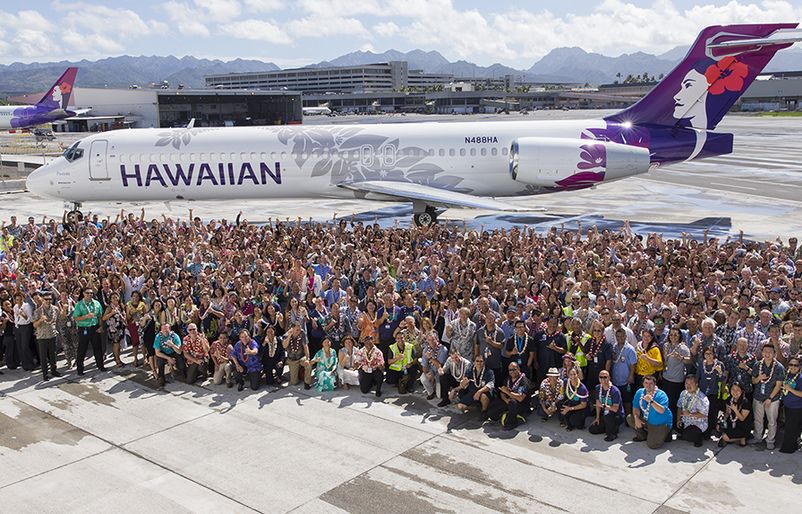
Introduction to Aviation Careers
Platt says it’s important for young students to hear about career pathways early – “showing all the careers, engineering, data analytics, HR, public relations.”
“We have a new program called Career Ambassadors where we’re focusing on high school, middle school, and elementary school to really talk to young students about careers in aviation,” says Ryland. “Just open up opportunities and eyes.”
“There are more questions from female students that will ask, ‘Can I do this?’ Not, ‘I want to do this.’ It’s great to answer those questions early. ‘Yes, you can. Not only can you, but the next time we come we’re bringing some of our female maintenance technicians and female pilots.’ Make sure they’re seeing that representation.”
Ryland continues, “We have good schools, good programs, and great careers here. We want to continue to support that.”
Now Hiring: Join Hawaii’s Hometown Carrier
The future of travel is looking bright. Now it’s your time to shine. Hawaiian Airlines, Hawaii’s largest and longest-serving airline, is hiring across the Islands. This is an airline that’s going places – and your career can, too.

